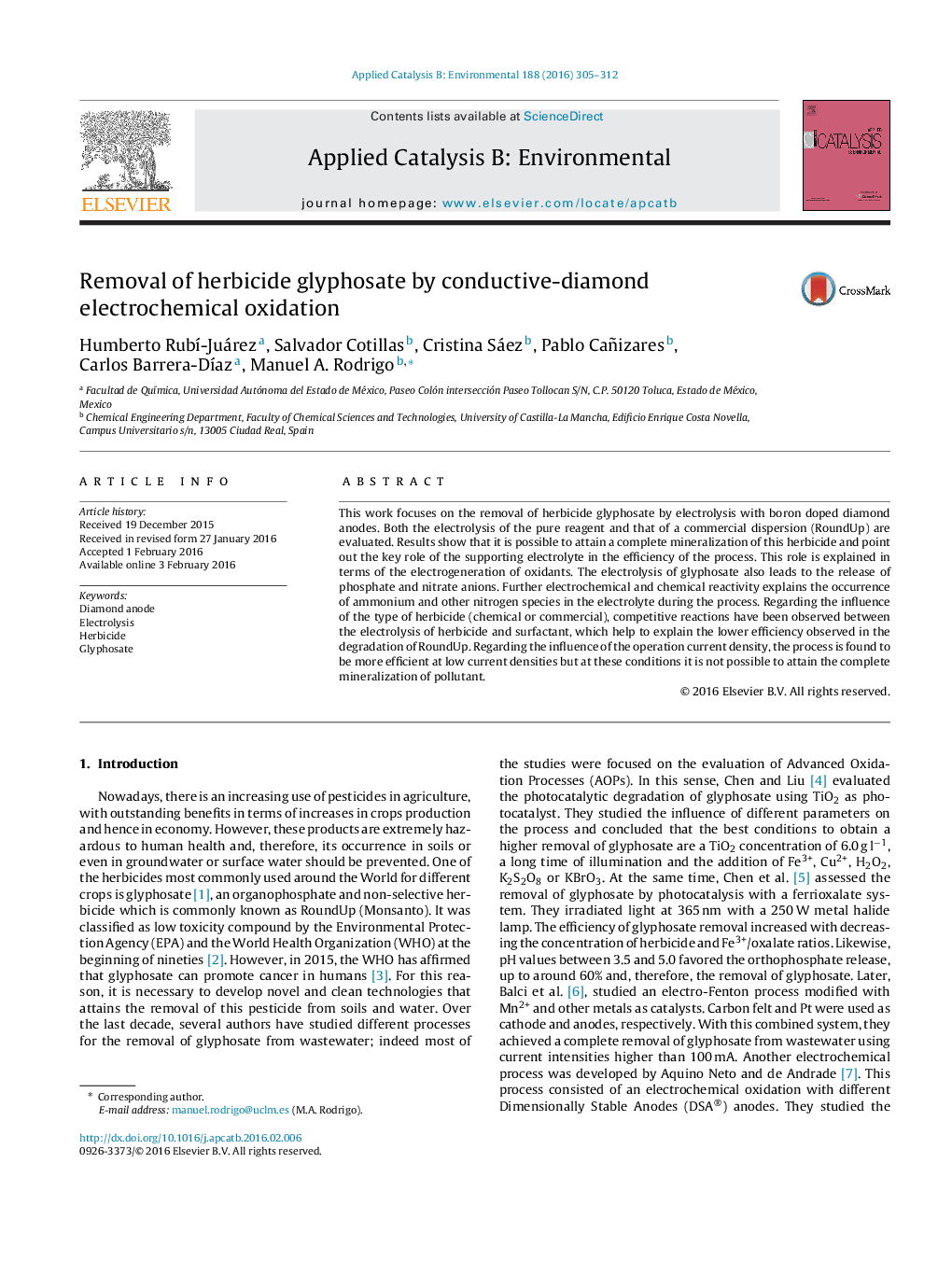| Article ID | Journal | Published Year | Pages | File Type |
|---|---|---|---|---|
| 45023 | Applied Catalysis B: Environmental | 2016 | 8 Pages |
•Glyphosate can be removed from wastewater by electrolysis with diamond anodes.•PO43−, NO3− and CO2 are the main final products of the oxidation of glyphosate.•Oxidants electrogenerated have an important effect on glyphosate degradation.•A complete mineralization of organic matter is obtained at 100 mA cm−2 in Cl media.
This work focuses on the removal of herbicide glyphosate by electrolysis with boron doped diamond anodes. Both the electrolysis of the pure reagent and that of a commercial dispersion (RoundUp) are evaluated. Results show that it is possible to attain a complete mineralization of this herbicide and point out the key role of the supporting electrolyte in the efficiency of the process. This role is explained in terms of the electrogeneration of oxidants. The electrolysis of glyphosate also leads to the release of phosphate and nitrate anions. Further electrochemical and chemical reactivity explains the occurrence of ammonium and other nitrogen species in the electrolyte during the process. Regarding the influence of the type of herbicide (chemical or commercial), competitive reactions have been observed between the electrolysis of herbicide and surfactant, which help to explain the lower efficiency observed in the degradation of RoundUp. Regarding the influence of the operation current density, the process is found to be more efficient at low current densities but at these conditions it is not possible to attain the complete mineralization of pollutant.
Graphical abstractFigure optionsDownload full-size imageDownload as PowerPoint slide
